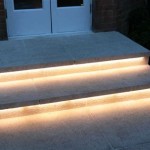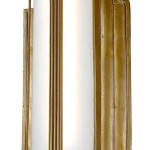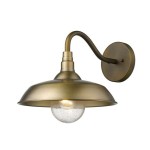Understanding Outdoor Solar Light Ratings: A Guide to Choosing the Right Lighting
Outdoor solar lights are becoming increasingly popular for their eco-friendliness and cost-effectiveness. They utilize sunlight to generate energy, eliminating the need for traditional wiring and reducing electricity bills. However, selecting the right outdoor solar lights for your specific needs requires understanding the various ratings and specifications. This article will provide a comprehensive guide to interpreting outdoor solar light ratings, enabling you to make informed decisions when purchasing these energy-efficient lighting solutions.
1. Lumens: Measuring Brightness
Lumens are the standard unit for measuring the brightness of a light source. Higher lumen ratings indicate brighter lights. When choosing outdoor solar lights, consider the area you want to illuminate and the desired brightness level. For example, a pathway might require lower lumen lights than a security light for your driveway. Refer to the light's packaging or product description for its lumen rating.
While lumens provide a good indication of brightness, they don't tell the whole story. The light distribution pattern also plays a significant role. Solar lights with wide beam angles are ideal for illuminating large areas, while those with narrow angles are more suitable for focused illumination. The ideal lumen rating depends on the specific application and personal preferences.
2. Solar Panel Wattage: Powering the Lights
Solar panel wattage indicates the amount of electricity the panel can generate from sunlight. A higher wattage panel can store more energy, allowing the solar light to operate for longer durations. The ideal wattage depends on factors like the geographical location, sunlight exposure, and desired operating time. Areas with abundant sunshine can utilize lower wattage panels, while areas with limited sunlight may require higher wattage panels.
Consider the size of the solar panel and its position relative to the sun's path. A larger panel with optimal sun exposure will generate more energy, extending the light's operating time. Factors like shade from trees or buildings can significantly impact the solar panel's efficiency.
3. Battery Capacity: Duration of Illumination
The battery capacity, typically measured in milliampere-hours (mAh), determines the duration for which the solar light can operate after a full charge. A higher battery capacity signifies a longer operating time. When selecting solar lights, consider the desired operating hours and choose a model with a capacity that meets your requirements.
Pay attention to the battery type, as some batteries offer better performance than others. Lithium-ion batteries are known for their high energy density and long lifespan. Other factors, such as the light's energy consumption and the duration of sunlight exposure, also influence the battery's discharge rate.
4. IP Rating: Weather Resistance
The Ingress Protection (IP) rating signifies a solar light's resistance to water and dust. The IP rating consists of two numbers, with the first number indicating protection against solid objects like dust and the second number indicating protection against water. For outdoor use, an IP rating of at least IP65 is recommended, signifying dust-tight and waterproof protection.
A higher IP rating indicates better weather resistance. Lights with IP66 or IP67 ratings offer increased protection against water and dust, making them suitable for harsh weather conditions.
5. Additional Features: Enhancing Functionality
Some outdoor solar lights come with additional features that enhance their functionality and usability. These may include motion sensors for automatic activation upon detecting movement, dimming options for adjusting brightness, and built-in timers for light scheduling. These features can enhance the convenience and effectiveness of outdoor solar lights.
When considering additional features, evaluate their relevance to your specific needs. Motion sensors can provide security and energy savings, dimming options allow for customization, and timers can ensure light operation during specific hours.
By carefully considering these ratings and specifications, you can select outdoor solar lights that effectively illuminate your outdoor spaces, promote energy efficiency, and enhance your property's aesthetics. Remember to research reputable brands and read customer reviews before making a purchase. Understanding these ratings allows you to make a well-informed decision and choose solar lights that perfectly meet your requirements.

5 Best Outdoor Solar Lights Of 2024 Reviewed

Best Solar Lights On Test In 2024 Bbc Gardeners World

Best Solar Lights On Test In 2024 Bbc Gardeners World

The Best Solar Landscape Lights Of 2024 Popular Science

The 3 Best Smart Outdoor Lights For Backyards Of 2024 Reviews By Wirecutter

200w High Brightness Lumen Outdoor Ip65 Rating Solar Led Street Light With Pole Road China System Power Made In Com

200w High Brightness Lumen Outdoor Ip65 Rating Solar Led Street Light With Pole Road China System Power Made In Com

Ceramic Solar Led Garden Light Ip Rating 33

The Best Solar Landscape Lights Of 2024 Popular Science

4pcs Outdoor Solar Lights Ball Lamp Tsv Ip55 Waterproof Led Path Light With Auto On Off Sensor Landscape Lighting For Yard Patio Walkway Pathway Garden White Com







